Biology Questions A LEVELS IAL
1/27
Earn XP
Description and Tags
Name | Mastery | Learn | Test | Matching | Spaced |
|---|
No study sessions yet.
28 Terms
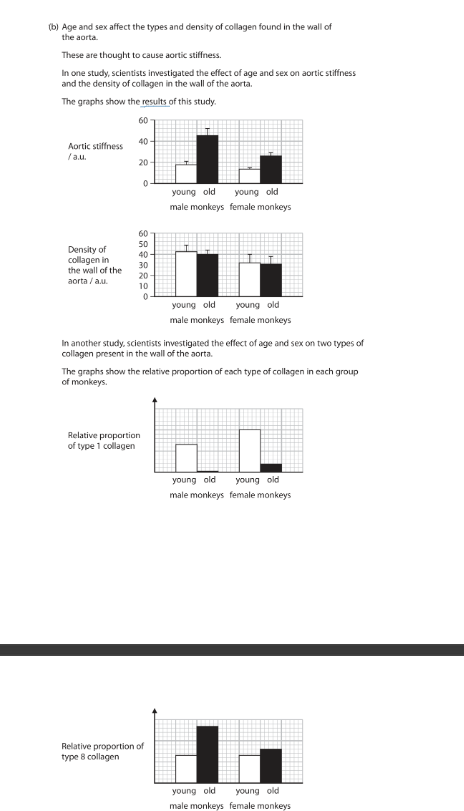
Comment on the effect of age and sex on the types of collagen found in the walls of the aorta and aortic stiffness. (6)
Use the information in the graphs to support your answer.
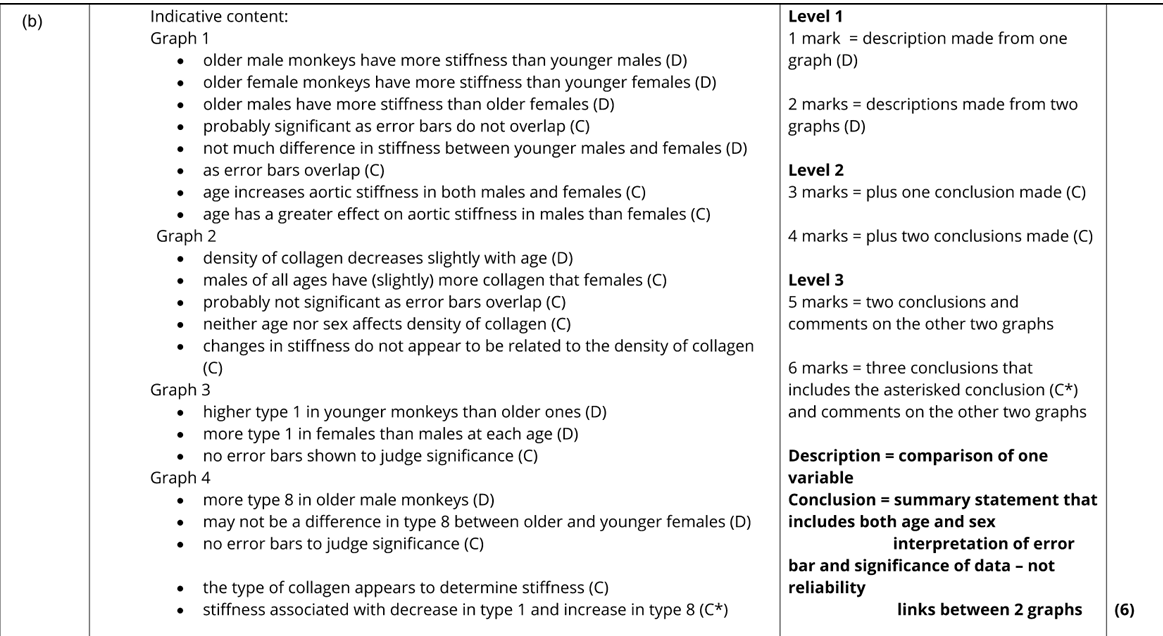
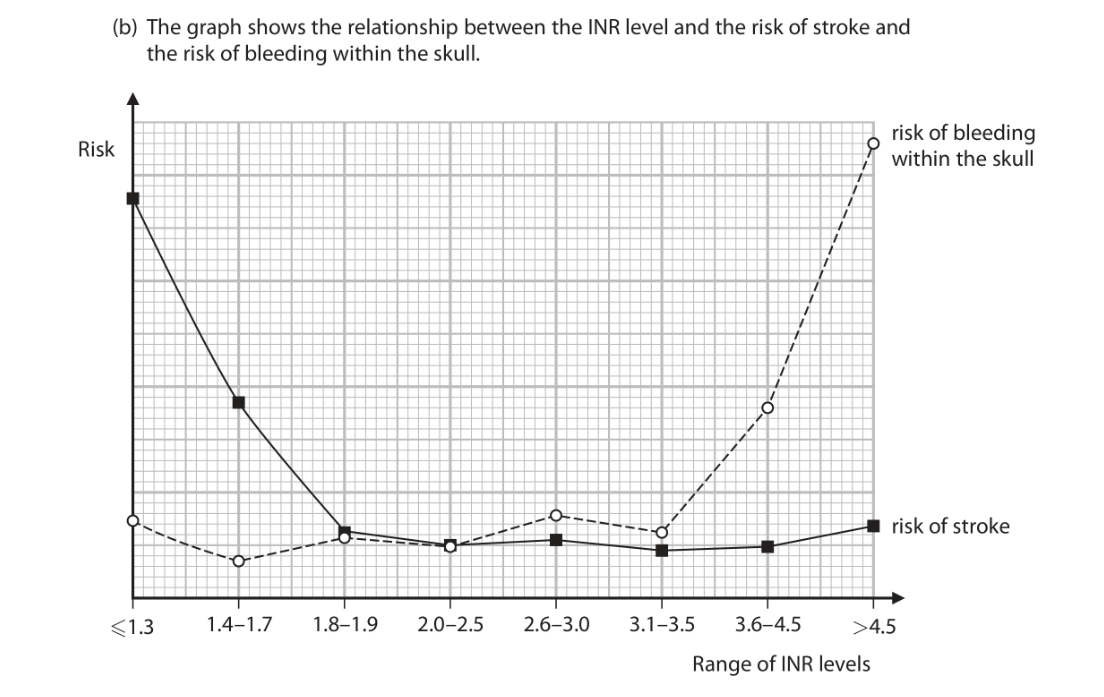
Deduce a safe INR level. (3)
1.8-3.5
below 1.8 there’s a high risk of stroke
above 3.5 there’s a high risk of bleeding within the skull
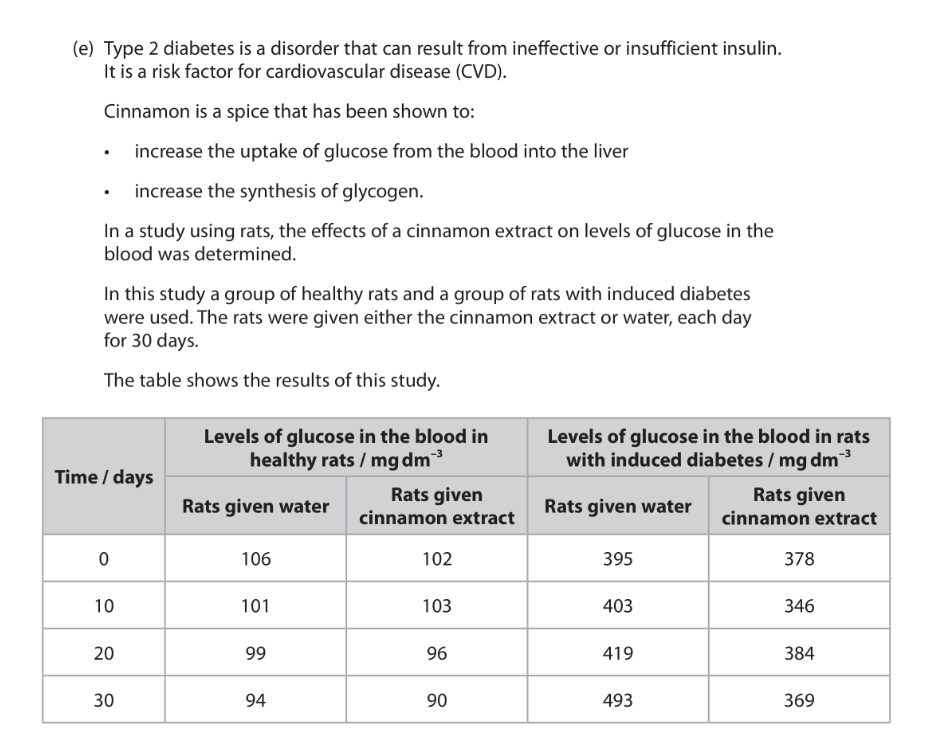
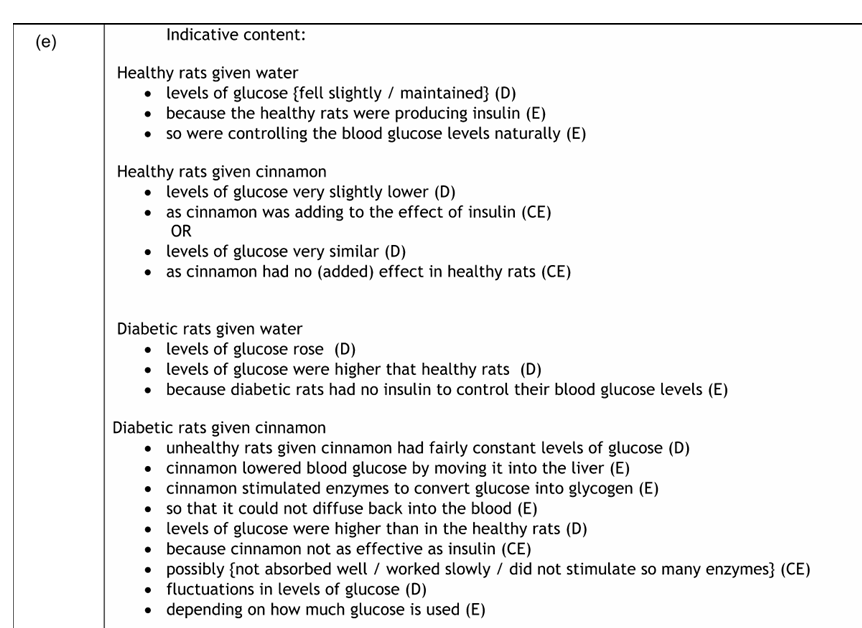
Too high of a warfarin dose can cause?
passing blood in your urine
passing blood in faeces or having black faeces
severe bruising
prolonged nosebleeds
vomiting or coughing up blood
heavy or increased bleeding during periods, or any other bleeding from the vagina
jaundice
In what ways can the primary structure of a protein differ?
(total) number of amino acids (in a peptide) / length of {(poly)peptide / chain}
{sequence / order / position} of amino acids
{proportion / number} of each type of amino acids (1)
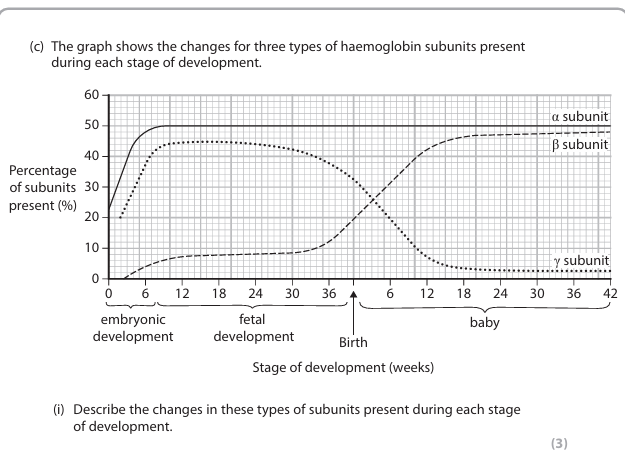
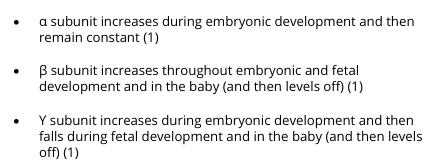
The oxygen affinity of fetal haemoglobin is different from adult haemoglobin.
Explain why this difference ensures the fetus obtains enough oxygen during development
fetal haemoglobin has higher affinity (than adult) (1)
{ACCEPT stronger {binding / association} (with oxygen)}
so that oxygen will leave the adult haemoglobin and bind to fetal haemoglobin (1)
at the same partial pressure of oxygen (1
Another form of CMT can be inherited as a sex‑linked trait on the X chromosome. Explain why a male with CMT cannot pass the disease on to his sons.

Explain why the wall of the aorta is thicker than the wall of a capillary. (3)
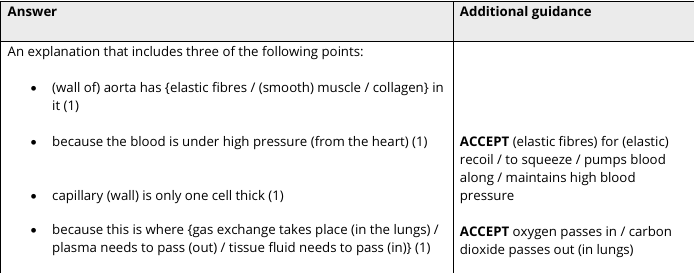
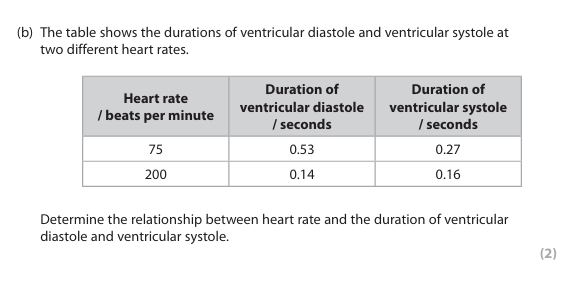
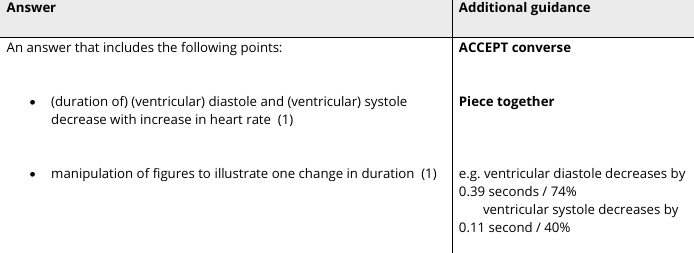
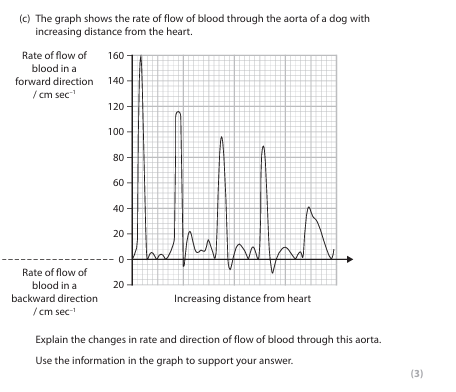

Warfarin is used as an anticoagulant to treat some patients.
Patients respond differently to this drug. This makes it difficult for doctors to select a safe but effective dose of warfarin to give to each patient.
Factors that affect the response of a patient to warfarin include age, body mass, liver function and genetic makeup.
(a) Explain why a safe but effective dose of warfarin needs to be given to a patient.
(b )Describe the role of mRNA in the production of enzymes.
*(ii) Pharmacogenomics analyses the genetic profile of individuals.
This analysis is used to determine the appropriate doses of a drug for individual patients.
Discuss the possible use of pharmacogenomics in selecting appropriate doses of warfarin for individual patients.
Use the information in the question and your own knowledge of the blood clotting process and genetic screening to support your answer. (6)
a)
(safe / not too high a dose) to avoid {uncontrollable bleeding / named examples of uncontrollable bleeding / internal bleeding} (1)
• (effective / not too low a dose) to reduce (the risk of) blood clotting (1)
b)
• to carry a copy of the gene {out of the nucleus / into the cytoplasm / to the ribosomes} (1)
• (used for) {(correct) ordering of the amino acids / producing amino acid sequence / formation of (poly)peptide chain} (1)

Eating soybeans may reduce cholesterol and low‑density lipoproteins (LDLs) in the blood.
Explain why eating soybeans may reduce the risk of heart disease.
• (less cholesterol) so reduces {build up of cholesterol / formation of atheroma / formation of a plaque} (1)
• in the (walls of the) coronary artery (1)
• so flow of blood to heart {muscle / cells / tissue} would not be prevented (1)
• so oxygen available for respiration for heart {muscle / cells / tissue / contraction} (1)
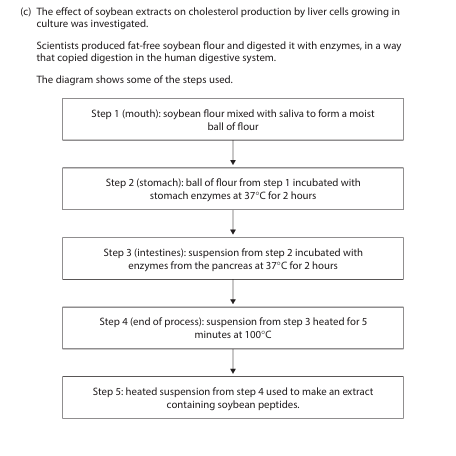
(i) Explain why the scientists used digested soybeans to make the extract for this investigation. (2)
(ii) Suggest why the soybean flour was incubated with different enzymes in steps 2 and 3. (1)
(iii) Explain why the soybean flour and enzymes were incubated at 37 °C for 2 hours in steps 2 and 3. (2)
(i) • because this (digestion) happens when a person eats soybeans / scientists wanted to mimic what was happening in the body (1)
• to {extract / separate / release} the {proteins / glycinin and β-conglycinin / active ingredients} (1)
• as enzymes needed to break (peptide) bonds (to produce the peptides) (1)
__________________________________________________________
ii) because they (different enzymes) are {found in different parts of the digestive system / needed to break down different proteins} (1)
ACCEPT more than one type of enzyme in the body two or more named parts of digestive system different substrates
________________________________________________________
iii) • 37°C because this is the {optimum temperature (for human enzymes) / (human) body temperature} (1)
• 2 hours because {this is enough time for complete digestion to occur / this is how long the digesting food stays in each part of the digestive system / this allows all the substrate to be broken down} (1)
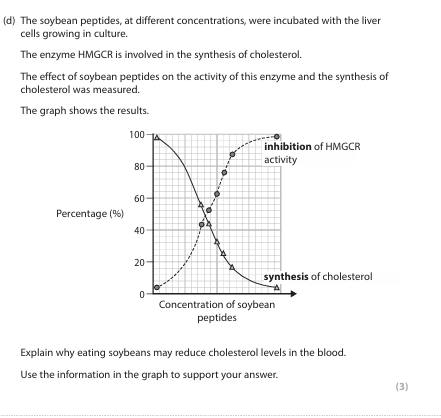
• as the concentration of soybean peptides increase, the inhibition of HMGCR increases and the synthesis of cholesterol decreases (1)
• because soybean peptides inhibit HMGCR
• because the peptides {bind to the HMGCR / compete with the substrate} (1) (ACCEPT bind to active site)
• as the cholesterol precursor cannot be converted into cholesterol (by HMGCR) (1)
Describe how these types of mutation (Substitution and insertion and deletion) affect the DNA base sequence of a gene.
substitution mutations {swap / change / replaces} a {base / nucleotide} (1)
insertion and deletion mutations (results in a) change in the number of {bases / nucleotide} (1)
ACCEPT increases and decreases number of bases / length of DNA gets longer or shorter
Explain why these animals can survive with a greater number of substitution mutations than insertion and deletion mutations. (4)
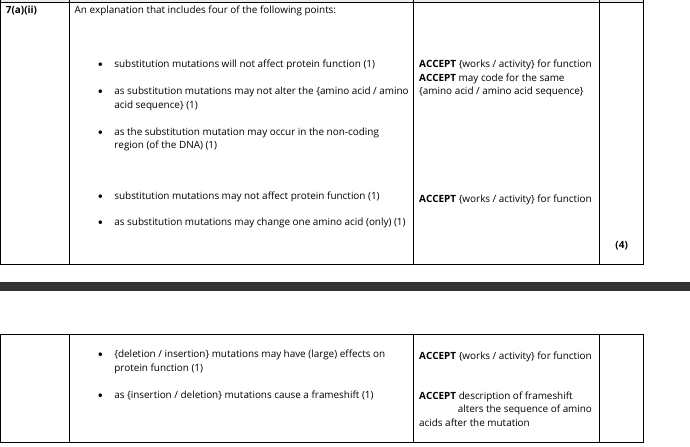
Avocados are high in unsaturated fatty acids and low in saturated fatty acids.
Compare and contrast the structure of an unsaturated fatty acid and the structure of a saturated fatty acids.
Similarities:
• both contain carbon and hydrogen (and oxygen) (1)
• both contain covalent bonds (only) (1)
Differences:
• unsaturated fatty acids contain carbon-carbon double bonds but saturated fatty acids have only single carbon-carbon double bonds (1)
• unsaturated fatty acids have {fewer hydrogens (for same number of carbons) / lower hydrogen to carbon ratio / higher carbon to hydrogen ratio} (1)
• unsaturated fatty acids are {kinked / bent} and saturated fatty acids are {straight / linear} (1)
Suggest two reasons for the differences in the number of mutations per cell of these species of animal. (2)
• cells divide at different {rates / frequencies} (1)
• different {repair mechanisms / DNA polymerases} (1)
• exposed to different {factors (that cause mutations) / environment} 1)
• different {quantities of DNA / base sequences / genes} (
The effect of eating avocados each week on the risk of coronary heart disease (CHD) was investigated.
A group of men and women who had no signs of cardiovascular disease (CVD) or stroke were selected.
They were all between the ages of 30 and 75.
The group ate avocados each week to replace animal products in their diet whenever possible.
The group all completed a questionnaire about the food they ate at the start of the investigation and every four years after that for over 30 years.
There were 41 701 men and 68 786 women in the group
*(ii) Describe the questions that need to be in the questionnaire so that appropriate information can be gathered for this investigation. Give reasons for choosing these questions. (6)
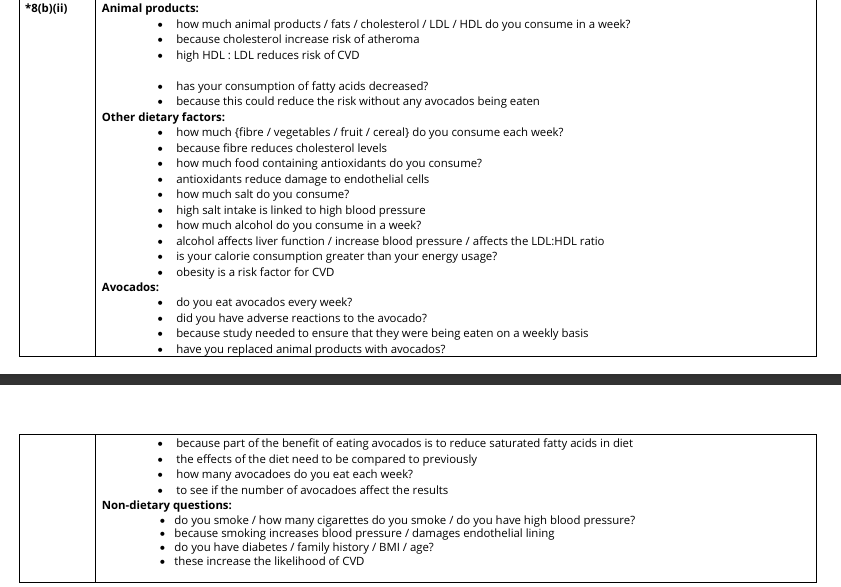

Fick’s law of diffusion

(OCT 2022)


Discuss how the structure and behaviour of these salamanders are adapted for gas exchange. (6)
Structure
• salamanders have both lungs and their skin for more gas exchange
• lungs allow oxygen from air and skin oxygen from water
• the skin is folded to increase surface area
• flattened body to increase surface area
• so that gas exchange will be faster
• skin has a good blood supply so that there will be high concentration gradient
• skin is very permeable to gases so that they can diffuse in faster
Behaviour
• salamanders live in fast-flowing water which will have high levels of oxygen
• shallow water will also have higher levels of oxygen
• shallow water will make breathing with lungs easier
• the rocking / swaying movements stir up the water
• which helps to aerate the water
• so that water with higher oxygen content is in contact with their skin
• so that there is a higher concentration gradient
• so that {gas exchange / diffusion of gases} will be faster
• the rocking / swaying maintains the levels of oxygen in the blood
Graph
• at low levels of oxygen in the water the frequency of rocking is high
• accompanied by an increase in blood pO2
• as oxygen levels in the water increase the frequency of rocking decreases
• but the blood pO2 continues to increase
• sufficient oxygen in water to diffuse into lungs and skin
• to maintain levels of oxygen
• rocking stops to conserve energy
Describe the structure of collagen?
Collagen is a fibrous protein with aa triple helix structure. Hled toegtehr by hydrogen bonds between the chains.
How does protease break down elastin?
Active site of protease binds to the elastin substrate. The activation energy is lowered. And the peptide bond is broken in a hydrolysis reaction.